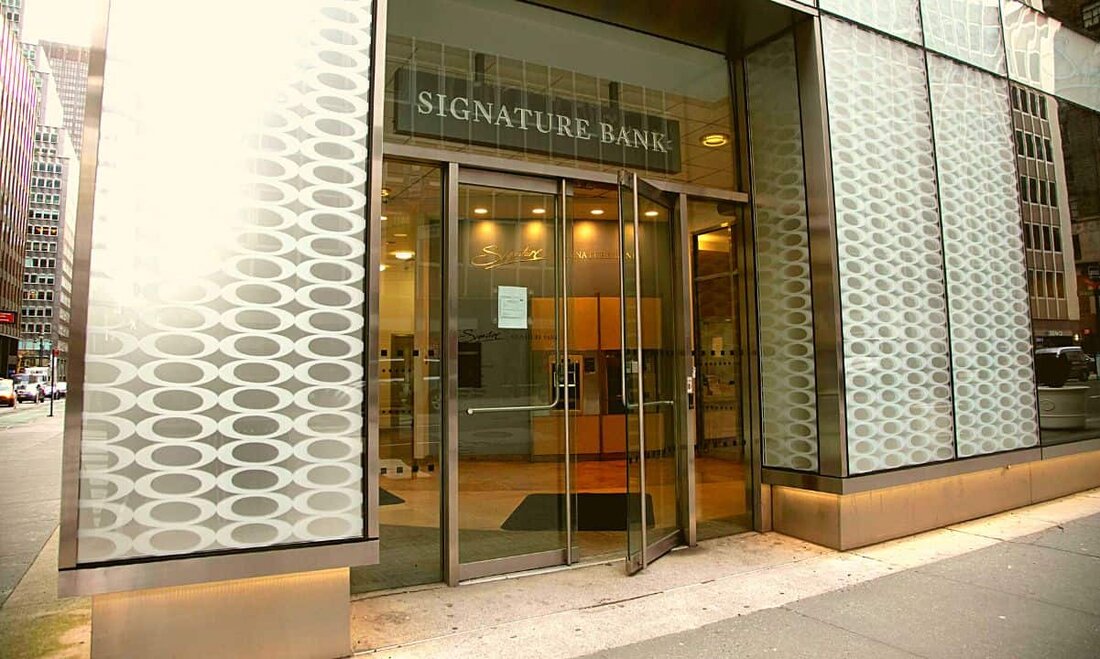Top Executives at Signature Bank Secretly Sold $100 Million in Stock: Report
Insiders at the now-defunct Signature Bank reportedly sold over $100 million worth of stock in the years after the bank shifted its focus to cryptocurrency companies. Signature Bank's chairman, its former chief executive officer and his successor have collectively sold about $50 million in stock over the past three years, according to an analysis by The Wall Street Journal. The trio, whose sales accounted for around half of the sales volume, last year served on the board committee responsible for monitoring the bank's risk profile. Insider transactions The transactions of bank insiders...

Top Executives at Signature Bank Secretly Sold $100 Million in Stock: Report
Insiders at the now-defunct Signature Bank reportedly sold over $100 million worth of stock in the years after the bank shifted its focus to cryptocurrency companies.
Signature Bank's chairman, its former chief executive officer and his successor have collectively sold about $50 million in stock over the past three years, according to an analysis by The Wall Street Journal. The trio, whose sales accounted for around half of the sales volume, last year served on the board committee responsible for monitoring the bank's risk profile.
Insider transactions
Bank insiders' transactions are shrouded in secrecy because they are not made clear in official documents, the WSJ investigation found. The securities rules and filing method also helped the sales go unnoticed.
Signature Bank has been in operation for more than two decades, and its collapse on March 12 was part of a series of bank closures that also included Silvergate Capital and Silicon Valley Bank (SVB). After embracing the crypto industry during the bull run, Signature's deposits increased by 68% in 2021.
Furthermore, the introduction of bank stocks recorded a gain of 140% in the same year. WSJ research estimated that insiders made $70 million from stock sales this year. That is twice as much as in 2020.
A large portion of the shares were sold by executives in the spring of 2021 for nearly $220. It is important to note that the stock was already in an uptrend and eventually reached a record high of $366 in early 2022.
While Signature did not directly hold or lend cryptocurrency, an internal payment platform called Signet was used by crypto companies to manage their cash. The original design for Signet was created by Signature chairman Scott Shay, who described himself as a “crypto enthusiast,” as the report noted.
Bank records show he sold $5.4 million worth of shares in 2021. He also bought $1.5 million worth of shares during the same period and around $644,000 in 2023, just before the high-profile collapse. Shay was joined by Joseph DePaolo, the bank's chief executive officer, and Eric Howell, its chief operating officer, who sold shares worth $13.9 million and $13.9 million respectively in 2021.
Additionally, Signature was one of only two companies in the S&P 500 that did not file insider trading transactions with the Securities and Exchange Commission (SEC).
Regulatory issues
Signature Bank was reportedly investigated by two US government agencies before its fall. The Justice Department investigated whether the company took the necessary measures to identify potential money laundering by its customers.
Officials were particularly concerned when the bank resorted to preventive measures to monitor transactions for “signs of criminality” and to properly vet account holders. In addition, the SEC also investigated the bank's dealings, but details of the investigation were not disclosed.
The signature was placed into receivership by the Federal Deposit Insurance Corporation (FDIC), which is bidding on its remaining operations. Last week, the FDIC issued a notice to the bank's remaining crypto customers to close all of their accounts by April 5.
The agency now aims to market a $60 billion loan portfolio in the coming months, primarily comprising commercial real estate loans, commercial loans and a small pool of single-family home loans.
.

 Suche
Suche
 Mein Konto
Mein Konto
